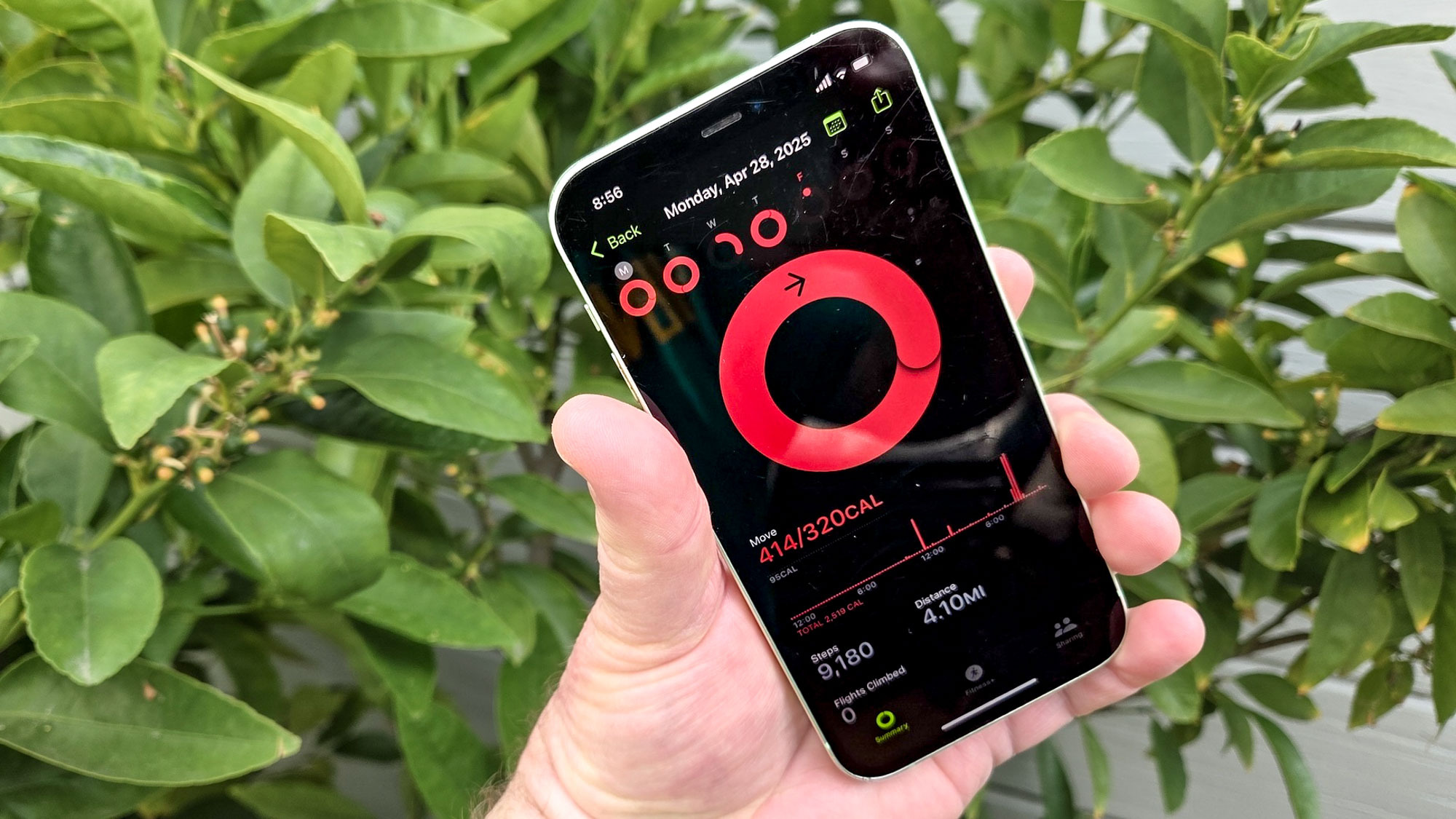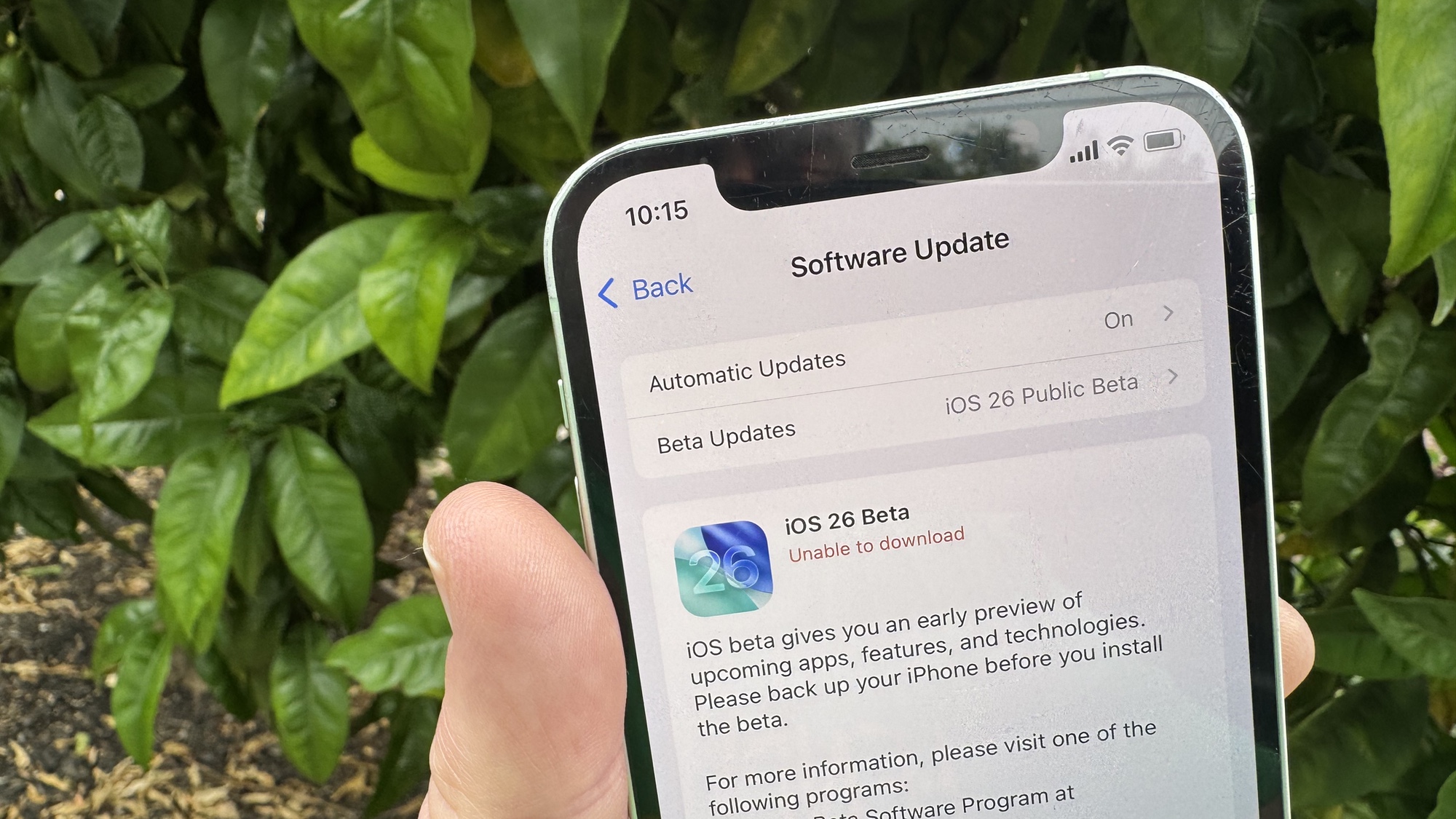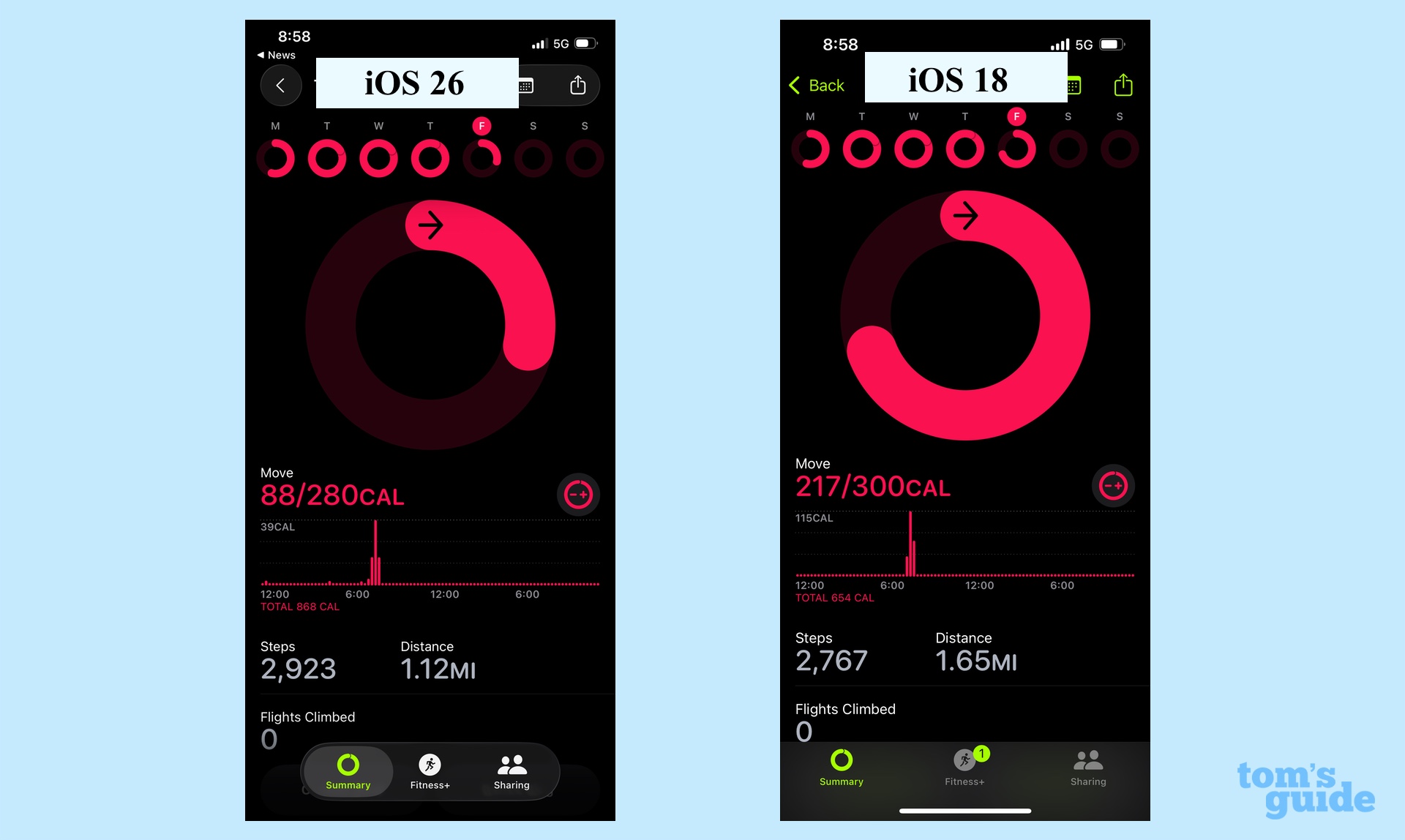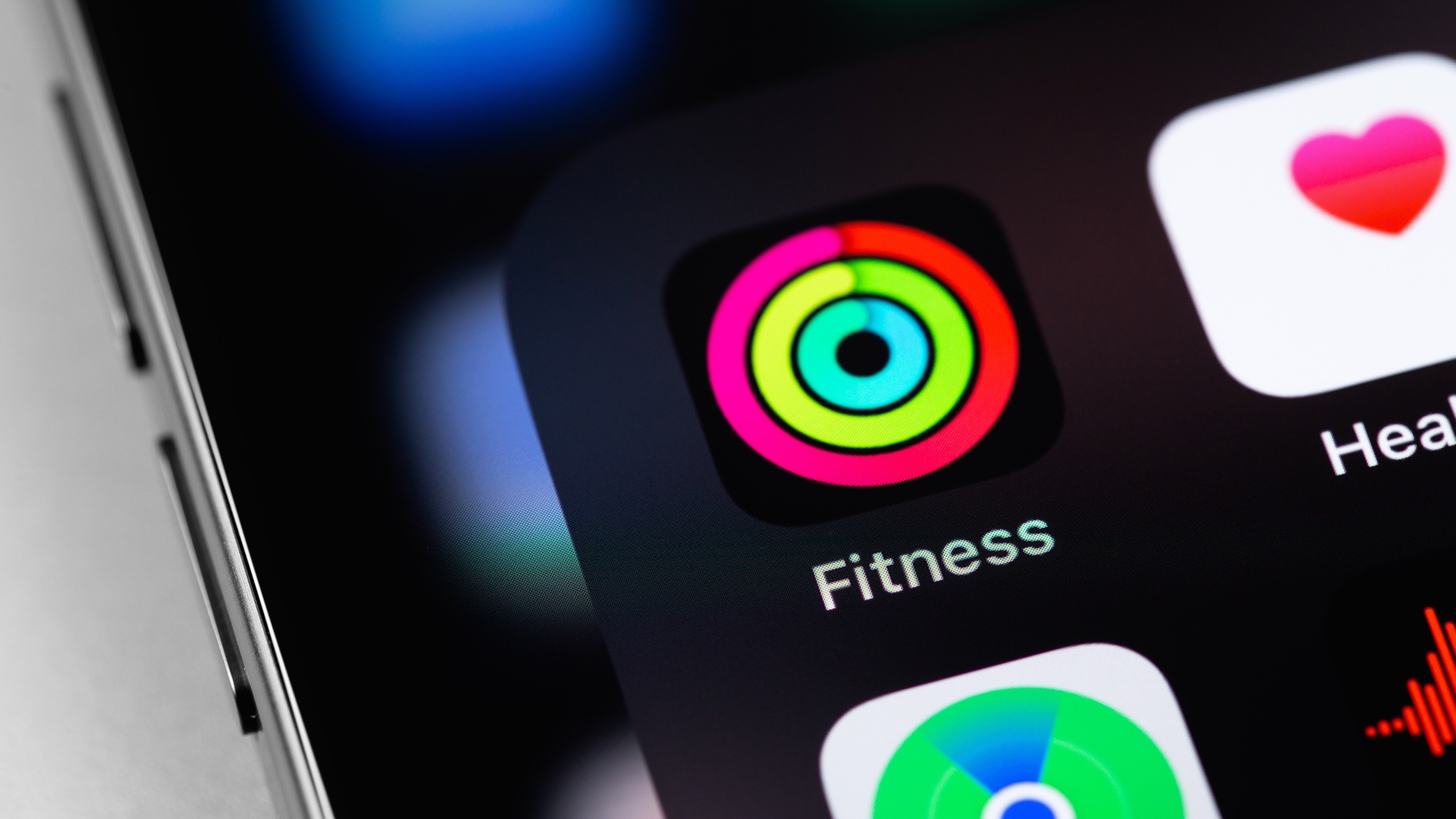I ran into a frustrating iOS 26 beta bug — and it has me worried about the accuracy of my fitness data

I've turned to the Fitness app on the iPhone to help motivate me to keep moving and stay active. But a couple weeks back, the only thing Fitness was motivating me to do was stay on the couch and reach for another snack rather than risk another frustrating workout.
If you're not familiar with Fitness, it's an app that tracks how much you move and how many calories you burn. You set move goals, the app tracks your progress and — if everything works out all right — you find yourself slowly and steadily spending more time on the go, thanks to the motivational and gamification aspects of the app.
A few OS updates back, Apple made the Fitness app independent of an Apple Watch, meaning you could log activity simply with your phone — a great development for folks like me who don't particularly care for smartwatches. And I've made extensive use of the Fitness app in that time, which has led to noticeable improvements in my overall health.
But the road to a healthier, happier me hit a speed bump a little while back. And the culprit turned out to be the iOS 26 public beta.
iOS 26 Fitness app — what went wrong

Not long after downloading the iOS 26 public beta onto my personal iPhone — I had previously been using the developer beta on test devices — I found myself at a backyard cookout roughly 1.3 miles from my house if Apple Maps' calculations are anything to go by. Being properly motivated to meet my daily move goal, I decided I would walk home and get in some extra steps.
At my normal pace, that's the kind of walk that would burn off about 160 calories in the iPhone's Fitness app. On this particular day, the app logged about half of that total.
And it wasn't just a one-off — everything from routine walks to more strenuous hikes were resulting in lighter-than-expected tallies in the Fitness app. My stats started trending downward. And as silly as it sounds, I found myself feeling less motivated to go out and close my Move ring if my best efforts weren't going to cut it. Gamification cuts two ways, after all.
Get instant access to breaking news, the hottest reviews, great deals and helpful tips.
I suspected the iOS 26 public beta had done something to throw off the Fitness app's count, but I wanted some hard proof. So one day, I decided to take a 1.2-mile walk to an appointment I had across town.
In one pocket, I carried my iPhone 12, running the initial release of the iOS 26 public beta; in the other, I carried an iPhone 14 still running iOS 18 that I was using to test a phone carrier. The resulting Move rings confirmed my suspicions.

The screenshot on the left shows the iPhone 12 results — a mere 88 calories burned afer logging 1.12 miles and 2,923 steps. On the right, the iPhone 14 indicates I've taken fewer steps, but I've burned approximately 2.5x more calories over a greater distance traveled. That seems to suggest the Fitness app in iOS 26 was severely undercounting my Move totals.
If I needed more proof, the second public beta of iOS 26 dropped shortly after my experiment. I upgraded my iPhone 12, and my Fitness performance immediately improved to its previous levels, matching the kind of output I was seeing from iOS 18-based devices.
So, assuming that the since-released iOS 26 public beta 3 doesn't put another whammy on the Fitness app, everything's fixed, right? I have nothing more to worry about after this momentarily blip?
Not exactly.
Why this matters

We're living in an age where we increasing depend on our devices to give us good, actionable data, a situation that's only going to intensify with tech companies pushing more AI-powered features upon us. That involves a lot of trust between you and the people who make the software that's crunching all that data. So what happens when something as a software update — even a beta update — can throw that data so out of whack?
Apart from maybe financial data, I can't think of something more critical to my well-being than my health. And while I'm willing to concede that a Move ring is hardly the most important vital sign in the world, it is something I use to stay motivated to remain active and healthy. When I'm being fed incorrect data — data that I know is wrong — it's going to have a de-motivating effect.
I'm singling out Apple here because that company happens to be making the device and software where this incident flared up. But you could cross out their name and pencil in just about any device maker who's pushing to make their product the centerpiece of your digital life. That device has to work reliably and consistently or else the game is up.
So my advice to anyone who relies on the iPhone Fitness app as a motivational coach is to make sure you're using the latest iOS 26 public beta if you've upgraded and to maybe wait for the full release of the software in the fall if you haven't yet upgraded. Even then, take steps to make that the data you're being fed gels with your real-world experience.
Follow Tom's Guide on Google News to get our up-to-date news, how-tos, and reviews in your feeds. Make sure to click the Follow button.
More from Tom's Guide
- Right now is the worst time to buy a new iPhone — here’s why
- I've tried out the biggest addition to iOS 26 Maps — here's what I like and what I don't
- iOS 26 preview — I've been testing Apple’s biggest update in over a decade
Philip Michaels is a Managing Editor at Tom's Guide. He's been covering personal technology since 1999 and was in the building when Steve Jobs showed off the iPhone for the first time. He's been evaluating smartphones since that first iPhone debuted in 2007, and he's been following phone carriers and smartphone plans since 2015. He has strong opinions about Apple, the Oakland Athletics, old movies and proper butchery techniques. Follow him at @PhilipMichaels.
You must confirm your public display name before commenting
Please logout and then login again, you will then be prompted to enter your display name.

